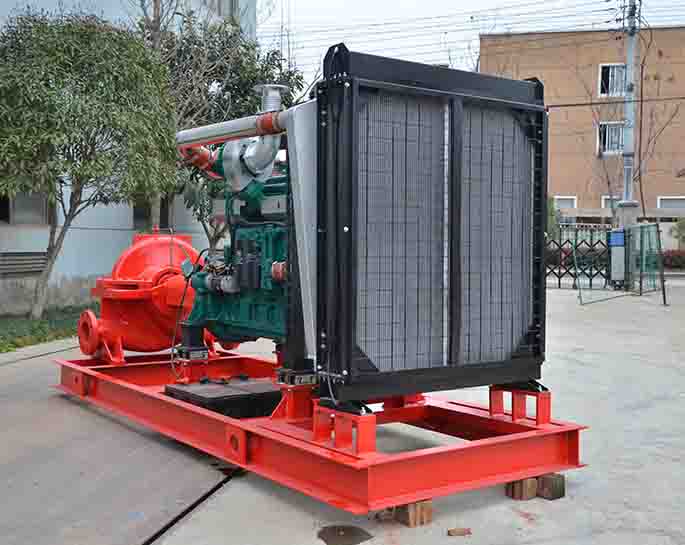Single-stage fire pump characteristics, maintenance and control cabinet requirements
Mar 17, 2023
Share:
Single-stage fire pump characteristics:
1. A single-stage pump is a basic fire pump that uses a single impeller to draw in and expel water. It is usually used in conjunction with a pressurized water storage tank.
2. A single-stage pump is typically used in residential applications, such as sprinkler systems. It is not suitable for applications that require a high pressure of water, such as large-scale fire suppression systems.
3. Single-stage pumps are generally less expensive than multi-stage pumps, but they are also less efficient and require more energy to run.
Maintenance:
1. To ensure proper operation and performance, single-stage pumps should be inspected and serviced on a regular basis. This includes checking the pump’s impeller, seals, and bearings, as well as examining all electrical connections to ensure they are secure.
2. Regular maintenance also includes testing the pump’s suction and discharge valves, inspecting the motor and motor bearings, and checking the lubrication levels.
3. The pump should also be cleaned on a regular basis to remove any debris or other contaminants that may be present.
Control cabinet requirements:
1. An approved control cabinet must be used to house the fire pump’s control system and other related components.
2. The cabinet must be designed with adequate ventilation to ensure proper operation of the equipment.
3. The cabinet must be constructed of non-combustible materials and must be able to withstand high temperatures.
4. The cabinet must also be equipped with a fire alarm system and a manual override switch to activate the pump in the event of a power failure.

1. A single-stage pump is a basic fire pump that uses a single impeller to draw in and expel water. It is usually used in conjunction with a pressurized water storage tank.
2. A single-stage pump is typically used in residential applications, such as sprinkler systems. It is not suitable for applications that require a high pressure of water, such as large-scale fire suppression systems.
3. Single-stage pumps are generally less expensive than multi-stage pumps, but they are also less efficient and require more energy to run.
Maintenance:
1. To ensure proper operation and performance, single-stage pumps should be inspected and serviced on a regular basis. This includes checking the pump’s impeller, seals, and bearings, as well as examining all electrical connections to ensure they are secure.
2. Regular maintenance also includes testing the pump’s suction and discharge valves, inspecting the motor and motor bearings, and checking the lubrication levels.
3. The pump should also be cleaned on a regular basis to remove any debris or other contaminants that may be present.
Control cabinet requirements:
1. An approved control cabinet must be used to house the fire pump’s control system and other related components.
2. The cabinet must be designed with adequate ventilation to ensure proper operation of the equipment.
3. The cabinet must be constructed of non-combustible materials and must be able to withstand high temperatures.
4. The cabinet must also be equipped with a fire alarm system and a manual override switch to activate the pump in the event of a power failure.







